Chart Color Schemes
est. as @ -- *
ABS ERP | -- people | --
2021 Census | -- people
Sales Activity
Curious about local property values? Filter the chart to assess the volume and appreciation (including resales) trends and regional comparisons, or scroll to the map below view this information at an individual property level.
Find a Recent Sale
Sales Detail
Population
O'Connor has seen population growth performance typically on par with national averages when looking at short and medium term trends
O'Connor (ACT)'s population was 5,917 as per the 2021 Census. By Aug 2025, it decreased to around 5,882, a drop of 35 people (0.6%). This decrease is inferred from ABS' estimated resident population of 5,870 in June 2024 and an additional 25 validated new addresses since the Census date. The population density was approximately 1,193 persons per square kilometer. Overseas migration contributed about 86.3% of recent population gains.
AreaSearch uses ABS/Geoscience Australia projections for each SA2 area, released in 2024 with a base year of 2022. For areas not covered and years post-2032, ACT Government's SA2 area projections with a 2022 base are adopted. Future population dynamics suggest an increase just below the median for Australian statistical areas by 2041, with an expected rise to 6,280 persons (an increase of 298 people or 4.8% over 17 years).
Frequently Asked Questions - Population
Development
AreaSearch assessment of residential development drivers sees a low level of activity in O'Connor, placing the area among the bottom 25% of areas assessed nationally
O'Connor has recorded approximately 24 residential properties granted approval each year. Over the past five financial years, from FY21 to FY25, a total of 122 homes were approved, with an additional 10 approved so far in FY26. Despite recent population decline, development activity has been adequate relative to other areas, benefiting buyers while focusing on premium properties with an average construction cost value of $543,000.
This year has seen $2.0 million in commercial approvals, indicating a predominantly residential focus. Compared to the Australian Capital Territory, O'Connor has significantly less development activity, at 71.0% below the regional average per person. The limited new supply generally supports stronger demand and values for established homes. Recent construction comprises 67.0% detached dwellings and 33.0% medium and high-density housing, offering a blend of attached housing types across various price ranges.
With around 364 people per dwelling approval, O'Connor shows a developed market with population forecasts indicating an increase of 281 residents by 2041. Given current development patterns, new housing supply should readily meet demand, providing good conditions for buyers and potentially facilitating population growth beyond current projections.
Frequently Asked Questions - Development
Infrastructure
O'Connor has moderate levels of nearby infrastructure activity, ranking in the top 50% nationally
The performance of an area can significantly influenced by changes in local infrastructure, major projects, and planning initiatives. AreaSearch has identified a total of 33 such projects that could impact the area. Notable projects include Northbourne Village - De Burgh, Yowani Grounds Estate Development, Yowani Country Club Redevelopment - Office Building, and Yowani Country Club - New Clubhouse. The following list details those likely to be most relevant.
Professional plan users can use the search below to filter and access additional projects.
INFRASTRUCTURE SEARCH
 Denotes AI-based impression for illustrative purposes only, not to be taken as definitive under any circumstances. Please follow links and conduct other investigations from the project's source for actual imagery. Developers and project owners wishing us to use original imagery please Contact Us and we will do so.
Denotes AI-based impression for illustrative purposes only, not to be taken as definitive under any circumstances. Please follow links and conduct other investigations from the project's source for actual imagery. Developers and project owners wishing us to use original imagery please Contact Us and we will do so.
Frequently Asked Questions - Infrastructure
New Northside Hospital (North Canberra Hospital Redevelopment)
Development of a new major tertiary hospital on the existing North Canberra Hospital campus (formerly Calvary Public Hospital). The project involves an investment of over $1 billion to construct a new state-of-the-art clinical services building, expanded emergency department, and modern inpatient facilities to replace aging infrastructure.
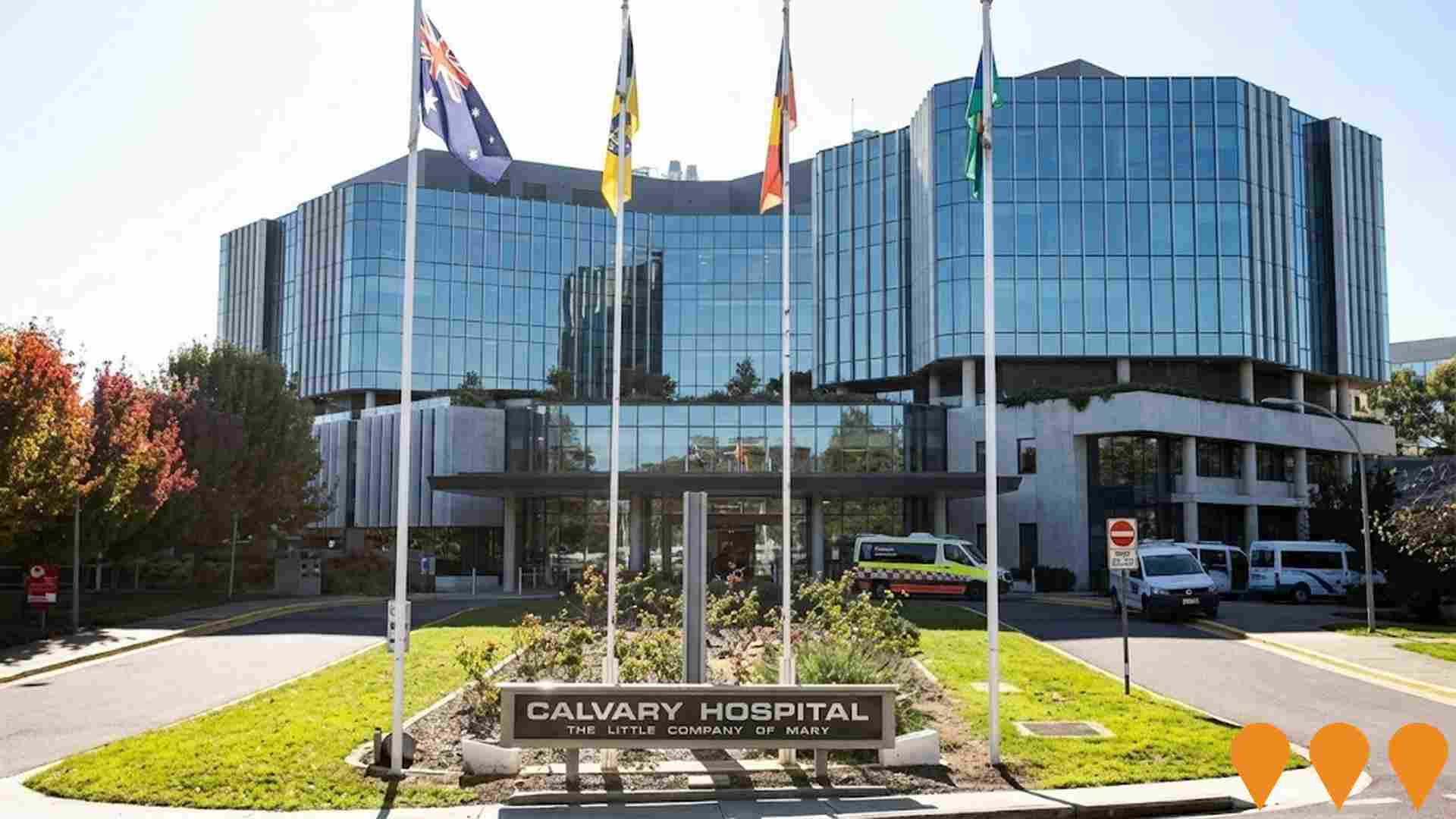
Thoroughbred Park Redevelopment Proposal
Political proposal by the ACT Greens (2024 election policy) to compulsorily acquire Thoroughbred Park (Canberra Racecourse) in Lyneham and redevelop the 58-hectare site into a new residential suburb for approximately 10,000 residents. The plan includes up to 5,000 new homes (with 540 public/community housing dwellings), Common Ground supportive housing, a retirement village, school, health facilities, community hall, environmental hub, parks, local shops and offices. Racing would be relocated elsewhere in the ACT.

AIS Podium Project
Redevelopment of the Australian Institute of Sport campus in Bruce delivering a new High Performance Training and Testing Centre, a multi-sport indoor dome, and fully accessible athlete accommodation (approximately 200 beds). Construction commenced in October 2025 following Parliamentary approval.
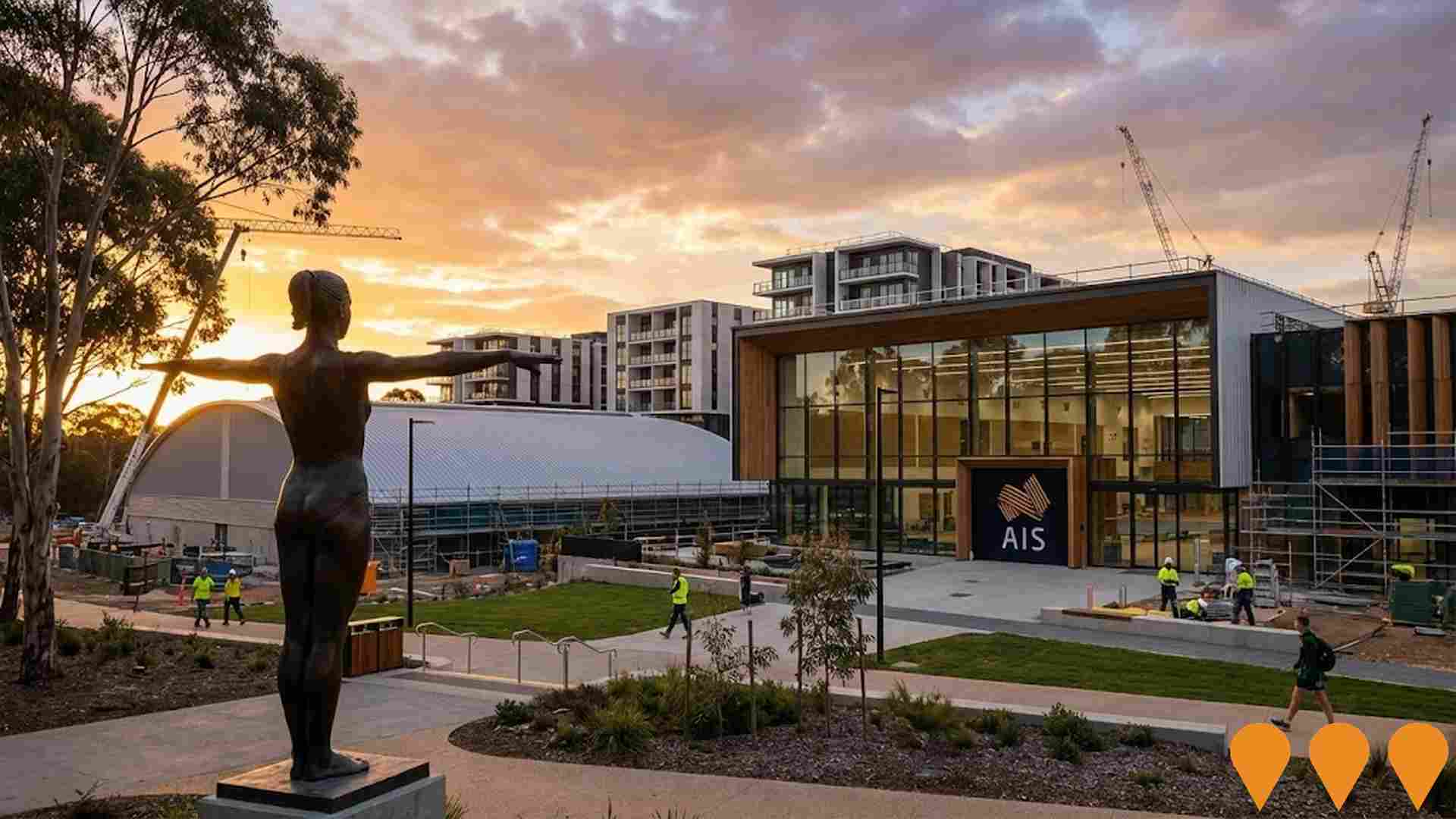
Ikon Place - Section 19 Braddon
Proposed mixed-use precinct on Section 19 Braddon delivering up to 650 apartments across multiple towers with retail and public realm improvements.
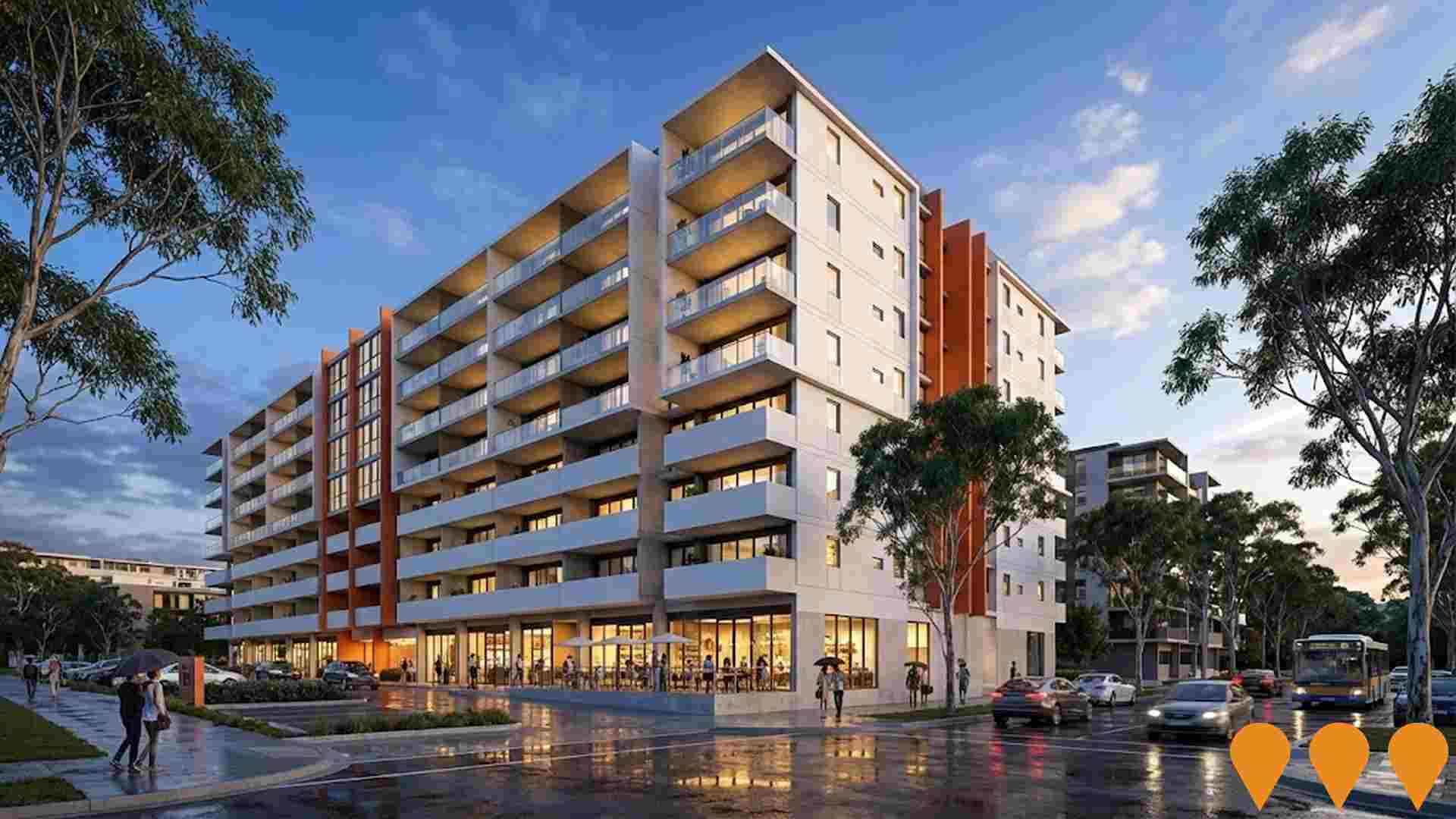
Yowani Grounds Estate Development
A mixed-use precinct redevelopment of Yowani Country Club, featuring two six-storey residential towers with 72 apartments and a central courtyard, plus a two-building six-storey apartment complex with 94 dwellings including apartments, townhouses, and penthouses, and 10 adjacent two-storey townhouses. Includes two basement parking levels, golf course views, and proximity to paths and open spaces. Designed by AMC Architecture and Cox Architecture.

Northbourne Village - De Burgh
The third and final residential release at Northbourne Village, featuring central position with commanding presence on Northbourne Avenue. Mixed-use development with one, two and three-bedroom apartments, sustainable design, double glazing, and smart home technology. Part of $300 million Northbourne Village precinct.

Northbourne Village - The Sullivan
Nine-storey residential building with one, two and three-bedroom apartments along Northbourne Avenue. Features sustainable design, mountain views, light rail access at door, and bike path connectivity. Part of the larger Northbourne Village precinct development.
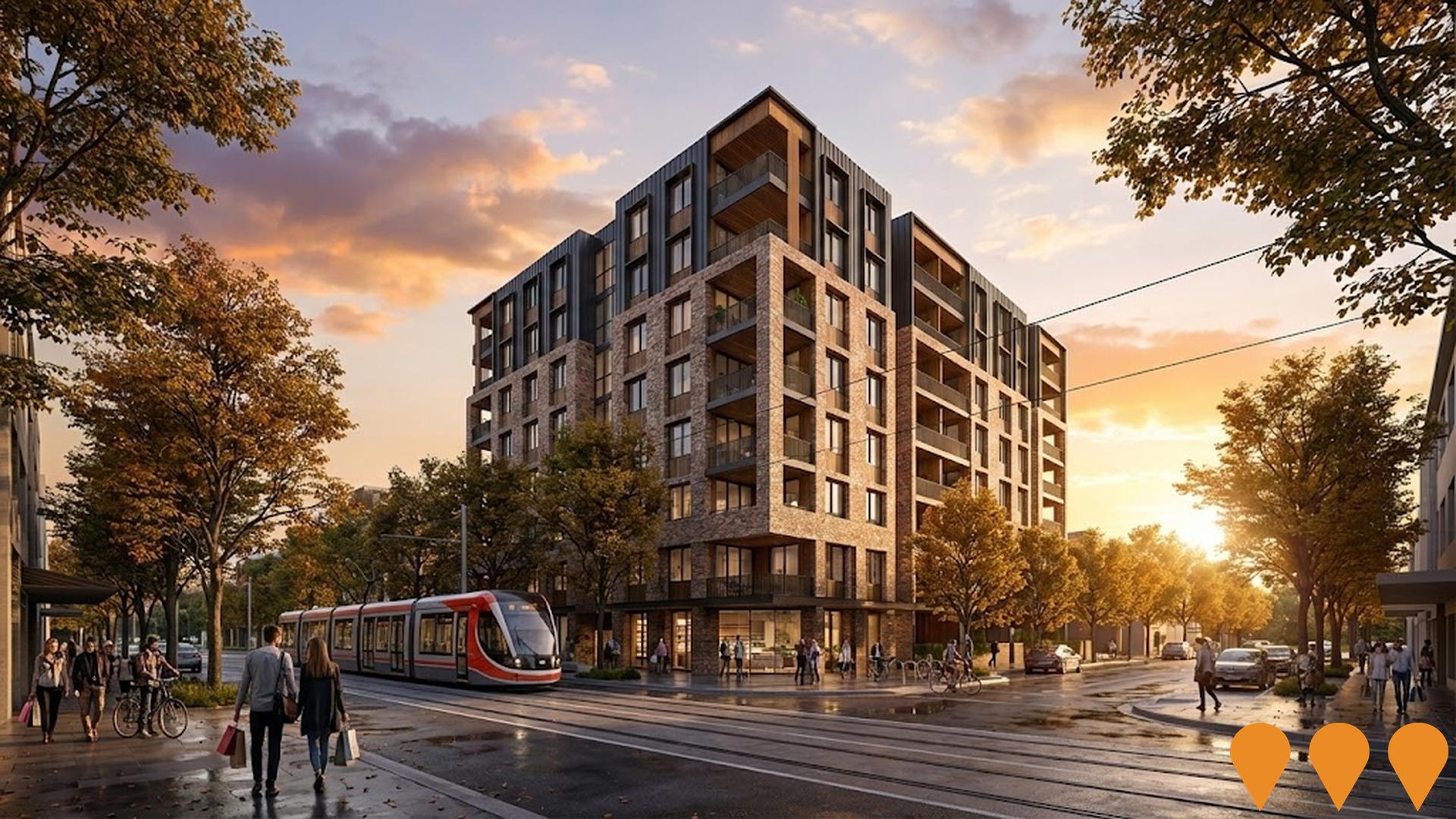
CSIRO Black Mountain Collections Building
Purpose-built facility housing CSIRO's National Research Collections including insects, plants, and wildlife specimens. Features climate-controlled storage, research laboratories, and public exhibition spaces to support scientific research and education programs.
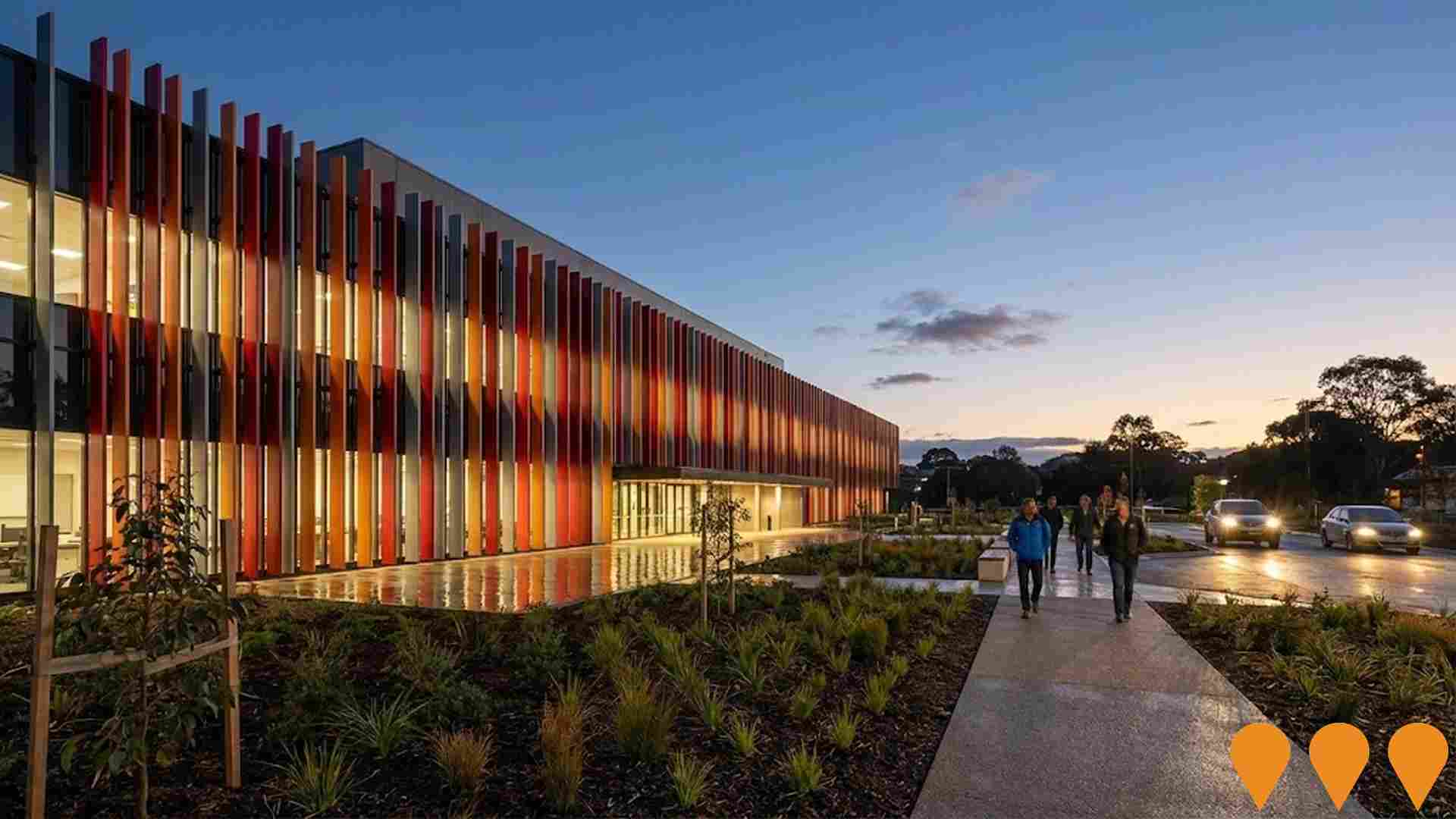
Employment
Employment performance in O'Connor exceeds national averages across key labour market indicators
O'Connor ACT has a highly educated workforce with strong professional services representation. Its unemployment rate is 3.0% and it experienced an estimated employment growth of 1.6% in the past year.
As of June 2025, 3,607 residents are employed, with an unemployment rate of 3.4%, 0.4% below the ACT's rate. Workforce participation is similar to the ACT's 69.6%. Dominant employment sectors include public administration & safety, professional & technical, and education & training. The area shows strong specialization in professional & technical services with an employment share of 1.4 times the regional level.
Health care & social assistance has a limited presence at 8.5% compared to the regional average of 11.7%. Employment opportunities appear limited locally based on Census data comparison. Between June 2024 and June 2025, employment increased by 1.6% while labour force grew by 1.6%, keeping unemployment relatively stable at 3.0%. In contrast, ACT's employment rose by 1.9%, labour force grew by 1.6%, and unemployment fell to 3.1%. National employment forecasts from Jobs and Skills Australia (May 2025) project national growth of 6.6% over five years and 13.7% over ten years. Applying these projections to O'Connor's employment mix suggests local growth of approximately 6.6%% over five years and 13.4% over ten years, assuming constant population projections for illustrative purposes.
Frequently Asked Questions - Employment
Income
The economic profile demonstrates exceptional strength, placing the area among the top 10% nationally based on comprehensive AreaSearch income analysis
AreaSearch's aggregation of ATO data for financial year 2022 shows O'Connor had a median taxpayer income of $71,027 and an average income of $87,803. Nationally, these figures are high compared to the ACT's median of $68,678 and average of $83,634. By September 2025, adjusted for Wage Price Index growth of 13.6%, estimated incomes would be approximately $80,687 (median) and $99,744 (average). Census 2021 data ranks O'Connor's household, family, and personal incomes highly, between the 91st and 94th percentiles nationally. Income distribution shows 31.2% of residents earn over $4,000 weekly, unlike metropolitan trends where 34.3% earn between $1,500 - $2,999 weekly. High earners make up 42.9% of the district, indicating strong economic capacity. Housing expenses account for 13.7% of income, and residents rank in the 91st percentile for disposable income. The area's SEIFA income ranking places it in the 9th decile.
Frequently Asked Questions - Income
Housing
O'Connor displays a diverse mix of dwelling types, with above-average rates of outright home ownership
In O'Connor, as per the latest Census evaluation, 65.9% of dwellings were houses while 34.1% consisted of other types such as semi-detached homes and apartments. This contrasts with the Australian Capital Territory's figures of 39.3% houses and 60.7% other dwellings. Home ownership in O'Connor stood at 31.8%, with mortgaged properties accounting for 29.2% and rented dwellings making up 39.0%. The median monthly mortgage repayment was $2,500, exceeding the Australian Capital Territory average of $2,080. The median weekly rent in O'Connor was recorded at $451, compared to the Australian Capital Territory's figure of $476. Nationally, O'Connor's mortgage repayments were significantly higher than the Australian average of $1,863, while rents were substantially above the national figure of $375.
Frequently Asked Questions - Housing
Household Composition
O'Connor features high concentrations of group households, with a higher-than-average median household size
Family households account for 62.5% of all households, including 27.7% couples with children, 24.9% couples without children, and 8.6% single parent families. Non-family households constitute the remaining 37.5%, with lone person households at 26.2% and group households comprising 11.4%. The median household size is 2.5 people, which is larger than the Australian Capital Territory average of 2.2.
Frequently Asked Questions - Households
Local Schools & Education
O'Connor shows strong educational performance, ranking in the upper quartile nationally when assessed across multiple qualification and achievement indicators
Educational attainment in O'Connor is high, with 61% of residents aged 15 and above holding university qualifications. This compares to 30.4% nationally and 46.8% regionally. Bachelor degrees are the most common at 31.5%, followed by postgraduate qualifications (23.2%) and graduate diplomas (6.3%). Technical qualifications represent 14.1%, with advanced diplomas at 6.3% and certificates at 7.8%.
Educational participation is notable, with 36% of residents currently enrolled in formal education. This includes 15% in tertiary education, 8.2% in primary education, and 8% pursuing secondary education. O'Connor's three schools have a combined enrollment of 499 students. The area has above-average socio-educational conditions (ICSEA: 1093). Education provision is balanced with two primary and one secondary school serving distinct age groups. School places per 100 residents are lower than the regional average at 8.5, indicating some students may attend schools in adjacent areas.
Frequently Asked Questions - Education
Schools Detail
Nearby Services & Amenities
Transport
Transport servicing is low compared to other areas nationally based on assessment of service frequency, route connectivity and accessibility
The analysis of public transport in O'Connor shows that there are currently 29 active transport stops operating within the area. These stops serve a mix of bus routes, with a total of 6 individual routes providing service to these locations. Each week, these routes collectively facilitate 370 passenger trips.
The accessibility of the transport system is rated as excellent, with residents typically located an average of 187 meters from their nearest transport stop. The service frequency across all routes averages at 52 trips per day, which translates to approximately 12 weekly trips per individual stop.
Frequently Asked Questions - Transport
Transport Stops Detail
Health
The level of general health in O'Connor is notably higher than the national average with both young and old age cohorts seeing low prevalence of common health conditions
O'Connor demonstrates above-average health outcomes with both young and old age cohorts seeing low prevalence of common health conditions. The rate of private health cover is exceptionally high at approximately 64% of the total population (3,752 people), compared to the national average of 55.3%.
The most common medical conditions in the area are mental health issues impacting 10.7% of residents and asthma impacting 8.2%, while 69.2% declare themselves completely clear of medical ailments, compared to 70.8% across Australian Capital Territory. The area has 15.5% of residents aged 65 and over (911 people), which is higher than the 11.4% in Australian Capital Territory. Health outcomes among seniors are particularly strong, performing even better than the general population in health metrics.
Frequently Asked Questions - Health
Cultural Diversity
O'Connor was found to be more culturally diverse than the vast majority of local markets in Australia, upon assessment of a range of language and cultural background related metrics
O'Connor's population was found to be more culturally diverse than most local markets, with 25.6% born overseas and 17.7% speaking a language other than English at home. Christianity was the predominant religion in O'Connor as of 2016, comprising 31.5% of its population. However, Judaism showed notable overrepresentation, making up 0.3% compared to the Australian Capital Territory's 0.5%.
In terms of ancestry, the top three groups were English (24.6%), Australian (22.9%), and Other (10.6%). Some ethnic groups had significant divergences in representation: Polish at 1.3% (vs regional 0.9%), Croatian at 1.1% (vs 0.7%), and Hungarian at 0.4% (vs 0.3%).
Frequently Asked Questions - Diversity
Age
O'Connor's population is younger than the national pattern
O'Connor's median age is 35 years, matching the Australian Capital Territory figure but slightly below Australia's 38 years. Compared to the Australian Capital Territory, O'Connor has a higher proportion of residents aged 15-24 (17.6%) but fewer residents aged 35-44 (10.3%). This concentration of 15-24 year-olds is significantly higher than the national average of 12.5%. Between the 2021 Census and the present, the 25 to 34 age group has increased from 15.7% to 17.6%, while the 75 to 84 cohort has risen from 3.3% to 5.0%. Conversely, the 5 to 14 age group has decreased from 11.7% to 10.3%, and the 35 to 44 age group has fallen from 11.7% to 10.3%. By 2041, population forecasts indicate substantial demographic changes for O'Connor. The 55 to 64 cohort is expected to grow significantly by 25%, adding 169 residents to reach a total of 860. This growth is largely due to demographic aging, with residents aged 65 and older representing 63% of the anticipated population increase. However, the 0 to 4 and 15 to 24 age cohorts are projected to experience population declines.

